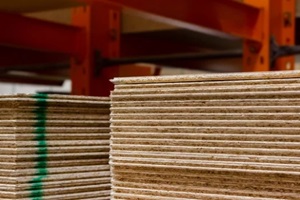 Wood is a versatile, natural building material used for both structural and decorative purposes. While some woods are naturally resistant to decay and insects, most are not; and all wood is susceptible to fire.
Wood is a versatile, natural building material used for both structural and decorative purposes. While some woods are naturally resistant to decay and insects, most are not; and all wood is susceptible to fire.
Given its historic and continued popularity in construction, it’s no wonder that finding ways to protect wood against its natural vulnerability to rot, bugs and fire has been an ongoing endeavor that continues today. This is where treated wood comes into play.
There are a range of solutions for increasing the stability and lifespan of lumber. A traditional approach with a long history of use involves subjecting the wood to flame in a controlled fashion.
More contemporary solutions are chemical-based while others use the strategic application of heat to modify wood against fungi, bugs and fire.
To better understand the different types of modified wood and their appropriate applications, this article will focus on three approaches to protecting wood: fire treating, heat treating, and pressure impregnation.
Fire Treating
Fire treating is a method for modifying wood with a long history of use, notably by the Vikings and the Japanese. Called yakisugi in Japan or, in the West, shou sugi ban fire treating continues in use today.
Process: Fire treating is the process of applying flame directly to the wood surface. Traditionally, planks of wood are bound together to create a triangular tunnel and then fire is used to burn the interior surfaces. When the wood forms a layer of char about ⅛” deep, the fire is quenched and the boards allowed to cool.
Purpose: Extend the life of the wood through improved resistance to wood boring pests, rot and fire.
Benefits: The high heat associated with charring changes the properties of wood cells to make the wood a less attractive food source for pests and fungi. The char layer itself resists ignition, and thereby acts as a fire-retardant. Fire-treating is a natural, environmentally friendly method for enhancing the longevity of wood.
Notes: Japanese Cedar and Cypress are the traditional species used for yakisugi in Japan, while pine, larch, spruce, and Western Red Cedar are used for fire-treating in North America. A 2021 study by the USDA Forest Service concluded that the data from tests on fire-treated wood for resistance to decay and flammability were inconclusive. The study noted that the effectiveness of fire-treating seems to vary by the species of wood treated, with cyprus showing the most consistent, positive results. Of note, the testing did not focus on the previously identified species that are most commonly used. Rather, it compared the effectiveness of fire-treating when applied to Black Walnut, Hemlock, White Oak, and Cypress.
On balance, there are many referenceable examples of structures using fire-treated wood for both exterior cladding and interior applications that have endured for decades.
Heat Treating
Process: Specific approaches to heat treating wood vary, but all process modify the wood through a controlled process that elevates the temperature of the wood to over 180℃ (>356℉) in an oxygen-free environment.
Some processes are one-step while others require multiple steps. Regardless of the methodology, heat treating modifies the chemical structures of the wood’s cells in a manner that increases its durability.
Purpose: Improve dimensional stability and resistance of wood to rot, decay and pests.
Benefits: Changes in the structure of heat treated wood gives it substantially improved resistance to rot, decay, organisms, and fire. The lifespan of heat treated wood is nominally 30 years. The heat treating process itself is chemical-free.
Notes: Heat treated wood effectively delivers the benefits previously identified. The potential weakness of heat treated wood is that the process makes it more brittle, reducing its tensile strength. As such, heat treated wood is not for structural, load bearing use. It is, however, a highly durable material well-suited for decorative applications.
Pressure Treating
Process: Pressure treating wood uses a vacuum chamber to force chemicals into wood cells. Wood is placed into a chamber, called a retort, and depressurized to create a vacuum that draws moisture from the cells of the wood.
When the chamber is repressurized, the chemicals are forced into the wood cells to thoroughly saturate the wood with the desired properties.
Purpose: Give wood resistance to fire or resistance to rot, decay and insects.
Benefits:
- Fire Retardant Treated Wood (FRTW)
-
- FRTW is slow to ignite and produces less smoke than untreated wood, giving more time and better opportunity for building occupants to safely evacuate in the event of fire.
- Wood treated with fire retardant chemicals using a pressure infusing process is a Class A fire retardant material. Building codes require the use of Class A fire retardant materials for many building applications.
- Preservative Treated wood (PT)
-
- Extends the life of wood by protecting it against rot, decay and wood-boring insects. Periodic maintenance applications of water repellant can help PT wood achieve a lifespan of around 20 years.
- The concentration of chemical infused into the wood can be adjusted based on the intended use of the wood, e.g. above ground; ground-contact; foundation use; full water immersion (piers, jetties, pylons).
- Unlike previously used preservative chemicals, the commonly used Copper Azole (CA) and Micronized Copper Azole (MCA) chemicals can be used for internal/enclosed applications as well as garden applications. (For internal/enclosed applications, lumber should be dried to 19% or less moisture content; plywood to 15% or less.)
Notes: At present, there is not a single treatment that will give wood protection from both fire and rot, decay and insects. When both qualities are desired, a choice needs to be made as to which quality should take priority.
 Reviewing with your material supplier the specific properties of different fire retardant and preservative chemicals can help refine that decision making process based on the intended application of the wood.
Reviewing with your material supplier the specific properties of different fire retardant and preservative chemicals can help refine that decision making process based on the intended application of the wood.
The majority of Class A FRTW options are almost all for internal, covered applications. For exterior applications or where the FRTW will be subjected to higher moisture environments, the only treatment available that does not leach out of the wood when exposed to water over time is a product called Exterior FireX™.
About Curtis Lumber & Plywood
Curtis Lumber & Plywood, founded in 1957, is an independently owned and operated wholesale lumber dealer exclusively serving premier lumber retailers throughout the mid-Atlantic and Southeast regions of the United States.
Based in Northern Virginia, we specialize in fire-retardant and preservative-treated lumber and plywood for indoor and outdoor applications.
If you are a lumber retailer with questions about plywood or treated wood products or need to order by the trailer load, unit, or piece, contact Curtis Lumber & Plywood at 703-552-5778.

